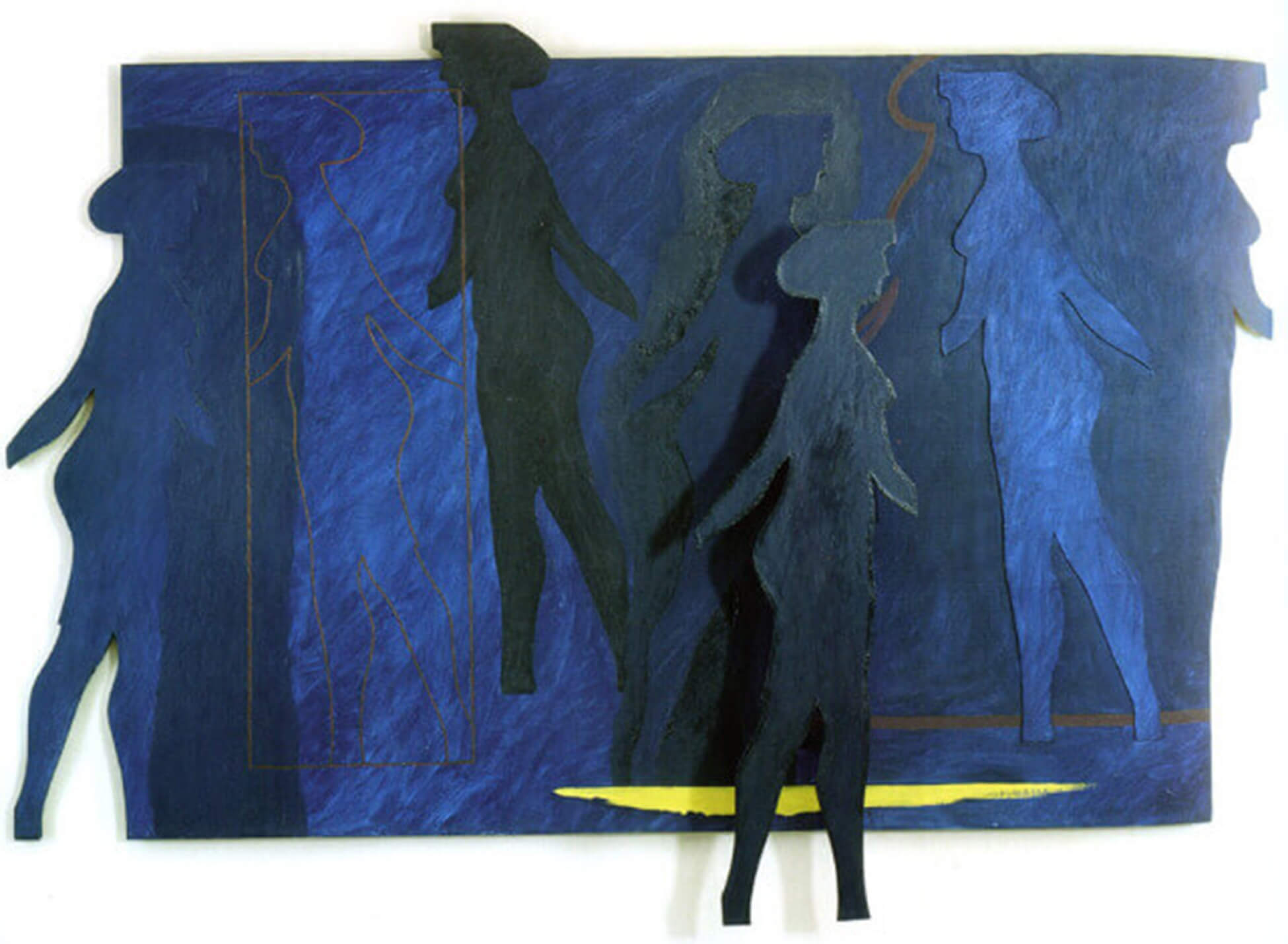Venus Simultaneous 1962

Michael Snow, Venus Simultaneous, 1962
Oil on canvas and wood construction, 200.6 x 299.7 x 15.2 cm
Art Gallery of Ontario, Toronto
Venus Simultaneous belongs to the first generation of Michael Snow’s Walking Woman works, and thus to his early years as a painter and sculptor. This large body of work comes with a creation story of experimentation and insight. Sometime in 1955 Snow began to use the matte knife as a drawing instrument; a series of figurative works on paper (collages) resulted from his combinations of cut-and-painted shapes. A period of abstraction followed, Snow re-engaging with the figure some five years later. In 1961, working with a large sheet of cardboard, he first drew a rectangle 5 feet (152 cm) high; he then drew and cut out the figure inside it: a walking woman or, more precisely, two walking women, one positive, the other negative. This duality interested Snow, and he was struck with the idea of working with these stencils, rigorously following a set of rules. The first rule was that the original cut-outs would be used to make all Walking Woman works, and with no variation in size: 5 feet high, as measured from forehead to ankle; 20 inches (50.8 cm) wide, as measured between the handless swinging arms.

For Snow, establishing this rule was an important intuition because it clarified for him something about abstraction. The Walking Woman was never the representation of a woman but the representation of a matrix (a template or form for creation, sometimes defined as a “womb”). The dimensions of the works (height, width, or depth) might vary, as the figure could run edge to edge, float in a larger field, appear cropped (vertically or horizontally), or be folded, rolled, boxed, tiered, or suspended. Combinations of figures created dynamic figure-ground relationships. As the series progressed, Snow broke the rule about size, and the figure that started out flat sometimes obtained voluptuousness.
Venus Simultaneous is difficult even for its creator to categorize: it is painting, collage, relief, and sculpture all in one. The cut-out is powerfully asserted in this work, in both its positive and negative modes, its entrances and exits forming irregular side and top edges; the work’s thickness, or depth, stems from the projection of one figure off the surface. At the time of its making, the Canadian critic Arnold Rockman observed that the figures seemed simultaneously to be inhabiting different kinds of space: moving back and forth across the spectator’s field of vision; receding; projecting, trespassing on each other’s turf; intruding into the real world! One figure is nothing but an outline. Another is layered, a collage. Still another is built up with impasto to a sculptural thickness. There are eight variations in all, not counting the shadow cast by the projected figure. But it must be counted because this impossibly thin and endlessly variable Walking Woman—a creature of light—foreshadows important directions in Snow’s work.

 About the Author
About the Author
 Download PDF
Download PDF
 Credits
Credits